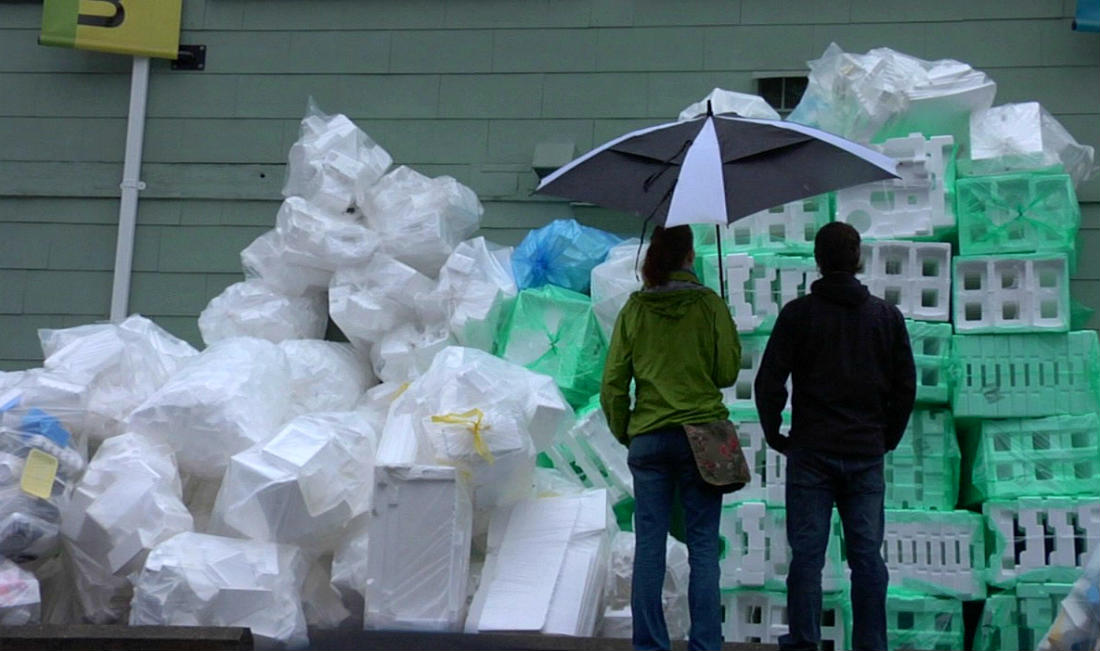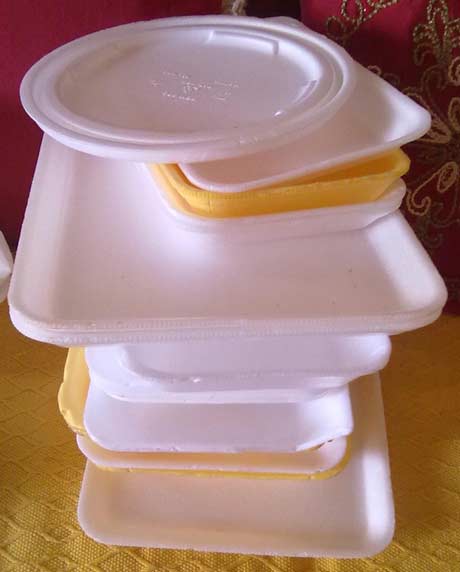Advertisements
Styrofoam, technically known as EPS (Expanded Polystyrene), has been widely used in construction due to its physical and chemical properties. Composed of small foam beads ranging from 1 to 8 mm in diameter, discarded Styrofoam can be easily ground and reused, becoming a valuable and sustainable resource in construction.

Advantages of Styrofoam in Civil Construction
The use of Styrofoam in civil construction brings several benefits, especially when mixed with cement, sand and water in specific proportions. This combination results in a type of lightweight concrete, ideal for situations that do not require high resistance to great stresses. In addition to being lightweight, concrete with Styrofoam offers excellent insulating qualities, which significantly expands its applications in buildings.
One of the main advantages of Styrofoam in construction is the reduction in the weight of construction elements, which is particularly useful in projects that require lighter structures. In addition, Styrofoam contributes to the industrialization of components in civil construction, facilitating the large-scale production of prefabricated elements.
Styrofoam Applications in Civil Construction
Styrofoam in civil construction is widely used in different architectural and landscaping elements, thanks to its low water absorption and the homogeneous finish it provides. One of the most common applications of concrete with Styrofoam is in the regularization of slabs, especially in cases where the required thickness could not be achieved with other materials.
In addition to slabs, Styrofoam can be used in several other elements of civil construction, such as internal walls of prefabricated houses, thermal insulation panels, among others. The versatility of Styrofoam makes it an economically viable option, especially for city governments that have selective waste collection programs and that can reuse the material in the production of lightweight concrete.
Sustainability and Savings with Discarded Styrofoam
The use of discarded Styrofoam in construction represents a sustainable solution to the problem of improper disposal of this material, which can take hundreds of years to decompose in the environment. By incorporating Styrofoam into lightweight concrete, it is possible to reduce the amount of waste in landfills, while promoting sustainability in construction.
In addition to being an environmentally friendly solution, using discarded Styrofoam in concrete can also generate significant savings, especially in large-scale projects. City governments, for example, can use ground EPS to produce sidewalks, sports courts, garden benches, flowerpots, balustrades and other urban landscaping elements, reducing the costs of traditional materials and contributing to environmental preservation.

Appropriate Proportions for the Use of Styrofoam in Concrete
For Styrofoam in civil construction to be effective, it is essential to follow the appropriate proportions when mixing with cement. Although the proportions may vary depending on the specific application, it is important to ensure that the mixture is homogeneous and that the Styrofoam is well incorporated into the concrete. This ensures that the final material has the desired properties, such as lightness, resistance and thermal insulation.
The correct use of Styrofoam in concrete allows it to be used in a wide range of applications, from decorative elements to lightweight structural components, such as non-load-bearing enclosure panels. Thus, Styrofoam in civil construction presents itself as a versatile, economical and sustainable alternative.
Challenges and Perspectives of the Use of Styrofoam in Civil Construction
Despite its many advantages, the use of Styrofoam in construction also faces challenges, such as the need to raise awareness among professionals in the field about the appropriate techniques for incorporating EPS into concrete. In addition, it is essential to have an infrastructure for collecting and processing discarded Styrofoam so that the material can be reused efficiently and sustainably.
However, with increasing awareness of the importance of sustainability and the growing demand for cost-effective solutions in civil construction, the trend is that the use of Styrofoam in construction will continue to grow. With investments in research and development, new techniques and applications of Styrofoam in civil construction may be discovered, further expanding its possibilities of use.
Styrofoam in the construction industry offers a smart and sustainable solution for the sector, combining economy, lightness and durability. By reusing discarded EPS, it is possible to reduce environmental impacts, promote recycling and also obtain efficient and high-quality construction materials. As awareness of the benefits of using Styrofoam in the construction industry increases, it is expected that this material will gain even more space in engineering and architecture projects, contributing to a more sustainable and innovative future in the construction industry.
Check out other interesting facts about recycling clicking here.
Learn how to make art by recycling, Click here.




I think this is a good option. But will it be a quality job? I have my doubts…
As far as I know, this system is widely used. Talk to a professional in the field to see if they have knowledge of the final result.
A hug!
Good evening, I would like to know the mix of this concrete and step by step. Thank you.
Hello José Roberto. It would be unwise of me to provide more information than is provided in the article, since a misinterpretation or incomplete reading of the instructions could cause structural failure and even accidents. That is why I wrote at the end of the article: “The appropriate proportion of Styrofoam to be used with concrete is technical information and should be obtained from a qualified professional.”
I count on your understanding!
A great purpose 🙂
Good morning, my name is Octávio and I would like to know if you know where I can find such a professional.
Octavio, do a search in our search area to find what you are looking for:
http://setorreciclagem.com.br/reciclagem-maquinas-equipamentos
I would like you to tell me how the mixed crumbled Styrofoam can be used.
to soil cement bricks (ecological).
Grateful.
Very cool, you have significant savings in weight and in your pocket; I put it in the plastering compound but it was grated Styrofoam, the result was very good
I HAVE A LARGE AMOUNT OF CRUSHED ISOPOR. WHAT IS THE BEST WAY TO NEGOTIATE THIS PRODUCT. RECIFE – PE.
Hi guys, my name is Marcos. It depends a lot on the density of the material you want to make lightweight concrete with EPS and a material with an initial resistance of 400kg/m³ and can reach 1,600km³.
more information and thermal acoustic firebreak and surprisingly it floats in water and is super light and waterproof, and you fix a screw without needing a bushing. in addition you cut it with a saw. more information my email [email protected] I have been working with the material for 10 years
Thanks for the information, Marcos
Video exemplifying what Marcos said. Russian video of assembling a house. With floors and walls. The cool thing is that they use glue and clamps to fix the walls.
Fabiano, please pass the video address
I AM PROGRAMMING A CIVIL CONSTRUCTION PROJECT. I HAVE BEEN RESEARCHING THIS PRODUCT, AND I HAVE EVEN MADE SOME FOR TESTING. THE THING THAT TOOK THE MOST WORK WAS CRUSHING THE STYROFOAM. BUT SO FAR FROM EVERYTHING THAT HAS BEEN DONE, I AM VERY CONVINCED IN CARRYING OUT THE PROJECT WITH THIS PRODUCT. THANK YOU.
Carlos, if you can photograph or film the step by step, I would like to publish it here on the website.